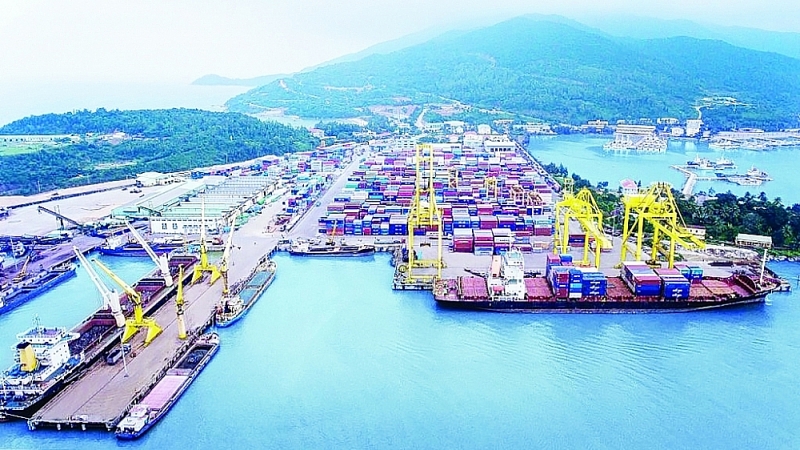VCN – Implementing tax reduction under the ASEAN – India Trade in Goods Agreement (AIFTA) for the 2022 – 2027 period, from December 31, 2021, all tariff lines in Vietnam’s Normal Track (NT) reduced to 0%, tariff lines of all items subject to Sensitive Track (ST) and Highly Sensitive List (HSL) will reduce on December 31, 2023.
 |
| The AIFTA Tariff includes 11,156 tax lines, including 11,139 tariff lines at the 8-digit level and 17 at the 10-digit level. Illustrative photo |
The ASEAN-India Free Trade Agreement (after this referred to as the AIFTA) was signed on August 13, 2009, in Thailand and approved by the Prime Minister of the Socialist Republic of Vietnam in Official Dispatch No. 2464/TTg-QHQT dated December 10, 2009, and took effect on June 1, 2010. According to the agreement’s commitments, import taxes will be reduced according to the schedule, starting in 2010 and ending in 2024.
Implementing Vietnam’s commitment to import tax in the AIFTA, the Government issued Decree No. 159/2017/ND-CP dated December 27, 2017, promulgating Vietnam’s Special Preferential Import Tariff to implement the AIFTA for the 2018-2022 period, which takes effect from January 1, 2018. The Tariff is built according to the ASEAN Harmonized Tariff Nomenclature (AHTN) 2017. Therefore, from 2018 to 2022, the issuance of Decree No. 159/2017/ND-CP has been carried out according to the schedule on commitments to reduce Vietnam’s special preferential import tax following the provisions of the AIFTA and Vietnam’s Nomenclature of exports and imports for five years and contribute to the support of customs statistics on import and export, ensuring synchronization, uniformity and creating a transparent business environment in terms of tax rates, creating favourable conditions for businesses and Customs authorities in implementation. Therefore, implementing Decree 159/ND-CP did not cause problems and inadequacies.
On March 8, 2022, the Government issued Resolution No. 29/NQ-CP approving the ASEAN Harmonized Tariff Nomenclature (AHTN) 2022. Therefore, to be consistent with Vietnam’s Nomenclature of exports and imports to implement the AHTN 2022 and to continue implementing the commitments on import taxes in the AIFTA, the Ministry of Finance has developed and submitted to the Government Decree No. 122/2022/ND-CP dated December 30, 2022, promulgating Vietnam’s special preferential import tariffs to implement the AIFTA for the 2022-2027 period.
The Decree will cover all member countries of the AIFTA, including 10 ASEAN countries and India. Regarding the subjects of application, following the subjects of implementation of the Law on Import and Export Tax and the Law on Customs, the Decree stipulates three subjects of application: taxpayers according to the provisions of the Law on Import and Export Duties; Customs administrations, customs officers; organizations and individuals have rights and obligations related to imported and exported goods.
Vietnam’s import tax commitments under the AIFTA are signed based on the AHTN 2022. Therefore, to implement the commitments in the AIFTA, and comply with the relevant ASEAN Customs Agreements regarding the application of the AHTN 2022 and the Harmonized System (HS) 2022 of the World Customs Organization (WCO), the Ministry of Finance has converted from AIFTA tariffs from AHTN 2017 to AHTN 2022 to serve as the basis for promulgating Vietnam’s AIFTA special preferential import tariff for the 2022-2027 period.
The AIFTA tariff includes 11,156 tariff lines (excluding 264 CKD tariff lines), of which 11,139 are at the 8-digit level, and 17 are at the 10-digit level. The code and description of goods are updated according to the Circular of the Ministry of Finance on promulgating Vietnam’s Nomenclature of Exports and Imports, effective from December 1, 2022. Regarding the AIFTA tax reduction milestones from 2022 to 2027, from December 31, 2021, all tariff lines in Vietnam’s Normal Track (NT) will reduce to 0%, tariff lines of all items subject to Sensitive Track (ST) and Highly Sensitive List (HSL) will reduce on December 31, 2023. Under AIFTA, Vietnam will eliminate 65% of import tariff lines.
Imported goods eligible for special preferential import tax rates under the AIFTA must fully satisfy the conditions as follow: – included in the Special Preferential Import Tariffs promulgated together with the Decree; imported into Vietnam from countries that are members of the AIFTA, including goods from the non-tariff zone imported into the domestic market; meet the regulations on origin of goods (including regulations on direct transport), have a Certificate of Origin (C/O) Form AI or have a document certifying the origin of goods, according to provisions of the AIFTA and prevailing regulations.
The promulgation of Decree No. 122/2022/ND-CP of the Government on Vietnam’s Special Preferential Import Tariffs for the implementation of the AIFTA for the 2022 – 2027 period is following commitments of the ACFTA and ensures the compatibility of the Decree with international treaties that Vietnam has signed; including compliance with the commitments in the ASEAN Customs Agreement (Article 19) on the application of ASEAN’s AHTN 2022 and the WCO’s HS 2022 when developing Vietnam’s Special Preferential Import Tariff to implement the ACFTA.
 | Amendment to export tariff and preferential import tariff meets roadmap of international commitments |
The contents of Decree No. 122/2022-ND-CP inherit provisions of Decree No. 159/2017/ND-CP promulgating Vietnam’s Special Preferential Import Tariff to implement the AIFTA for the 2018-2022 period. During the implementation of this Decree, the Ministry of Finance did not receive any feedback on problems from businesses and customs authorities.
By Yen Nhi/ Huyen Trang
